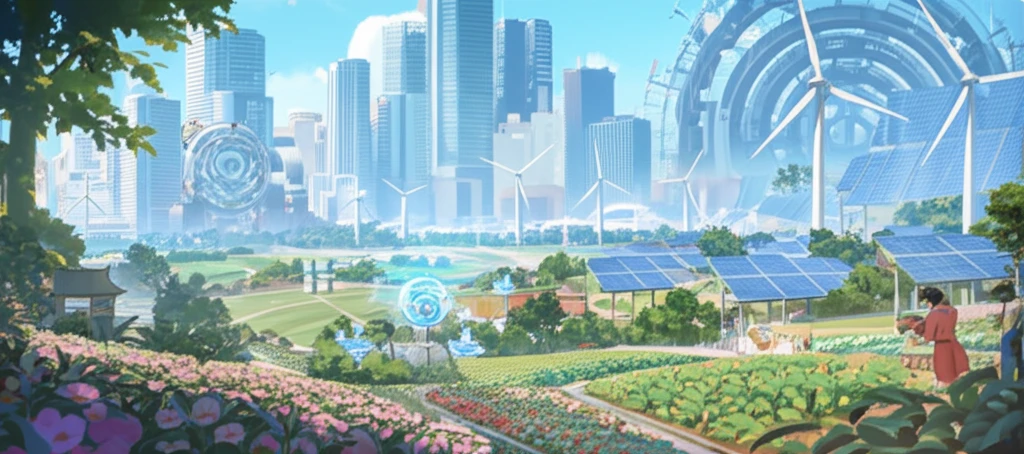
Boosting Food Security: How Agricultural Tech & Diversification Can Feed China
"Explore the co-benefits of combining agricultural diversification and technology to enhance food and nutrition security in China. Discover innovative strategies for a sustainable food future."
China, a global leader in the production of staple crops like maize, wheat, potato, and rice, faces the ongoing challenge of ensuring food and nutrition security for its massive population. The nation has actively pursued sustainable development programs within its agricultural sector, with a focus on achieving food self-sufficiency. However, as the country continues to evolve, it's becoming increasingly clear that a multifaceted approach is needed to address the complexities of modern food systems.
One prominent strategy is the 'well-facilitated farmland construction' (WFFC) approach, designed to consolidate traditional, small-scale farmlands into larger, more streamlined production areas. This initiative aims to maximize technology-based automation and improve soil fertility and productivity. While the WFFC holds promise, research indicates that diversified and smaller farms can offer unique ecosystem services, improve yield resilience, enhance production quality, and even reduce human health threats. This raises the question: Can China strike a balance between large-scale efficiency and the ecological benefits of diverse agricultural practices?
Moreover, China's nutritional landscape has changed dramatically in recent decades. Undernutrition has declined, but the prevalence of overweight, obesity, and chronic diseases has risen. This highlights the need for a strategic approach to crop and livestock management that not only ensures sufficient food production but also promotes balanced nutrition. Agricultural diversification, when combined with appropriate technologies, holds the potential to address both food security and nutritional needs in a holistic and sustainable manner.
Why Diversification is Key to China's Food Security Puzzle

Agricultural diversification encompasses a range of practices, including crop rotation, intercropping, crop genetic diversification, and the integration of flower strips and agroforestry. These methods offer a wealth of benefits, enhancing water resources, biodiversity, and soil health. For example, research on rice production in China and across the globe has demonstrated that diversification can improve financial profitability, boost biodiversity, and enhance pest control without negatively impacting yields.
- Increased Resilience: Diversified farms are better equipped to withstand climate change and other environmental stresses.
- Improved Soil Health: Crop rotation and other diversification practices enhance soil fertility and reduce erosion.
- Enhanced Biodiversity: Diversified systems support a wider range of plant and animal life, contributing to a healthier ecosystem.
- Reduced Reliance on Chemicals: Diversification can help to minimize the need for synthetic fertilizers and pesticides.
The Path Forward: Integrating Diversification and Technology
To fully realize the potential of agricultural diversification and technology, China needs to implement policies that encourage collaboration and innovation. This includes providing incentives for farmers to adopt diversified practices, supporting research into new technologies, and fostering dialogue between policymakers, researchers, and farmers. By embracing a holistic approach, China can build a food system that is not only productive but also sustainable, resilient, and nutritious.
